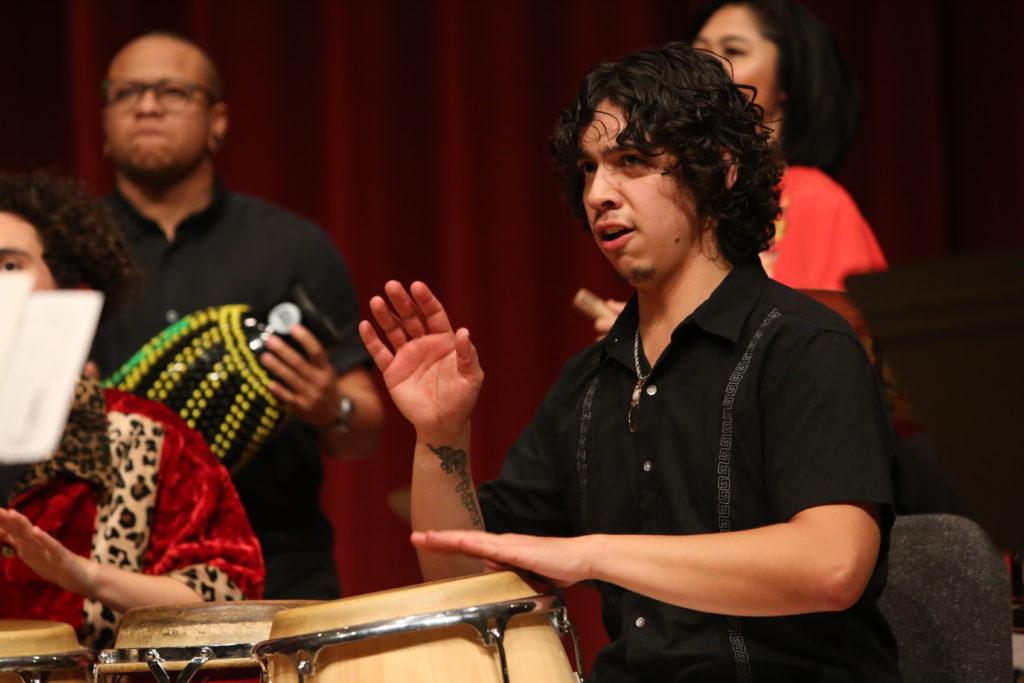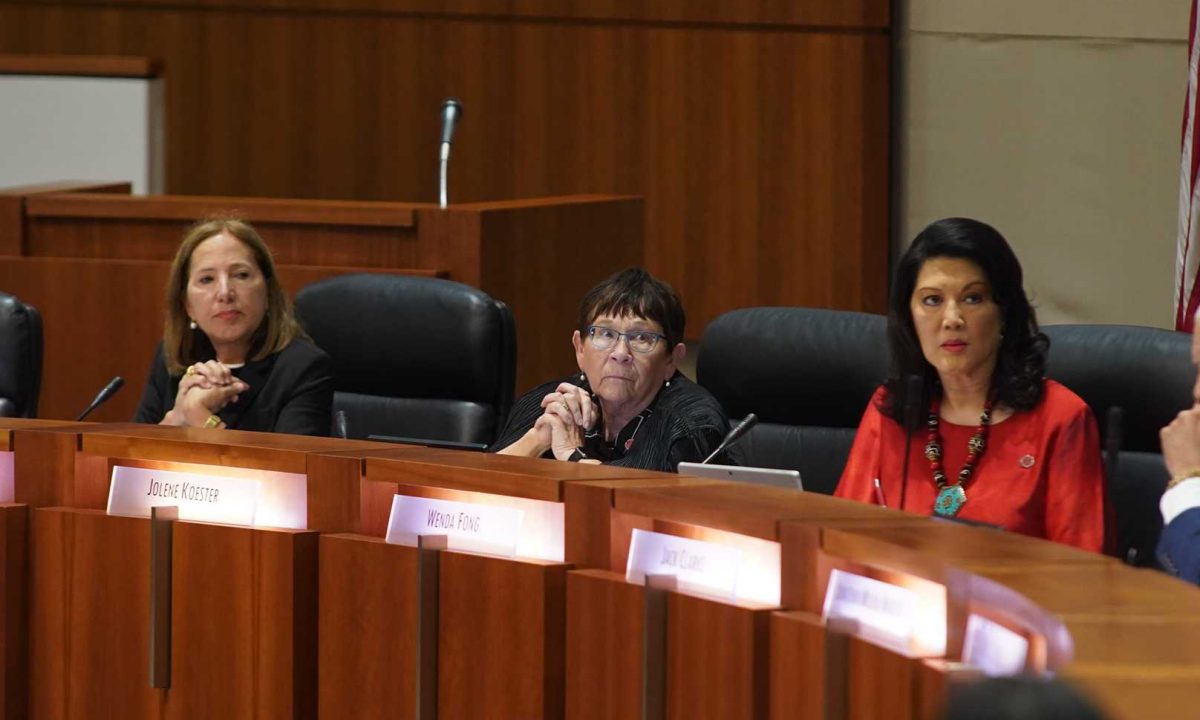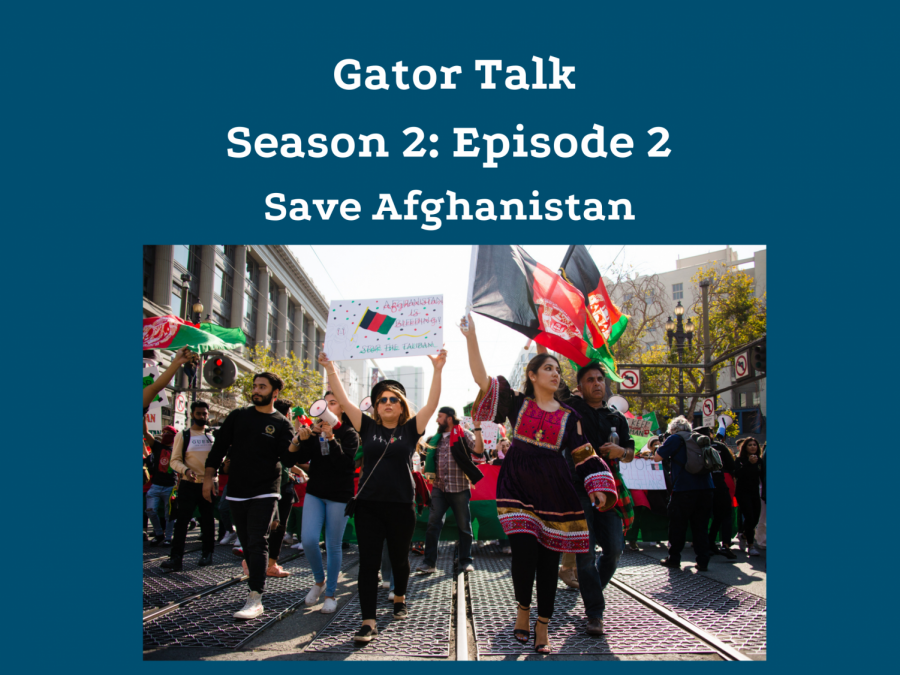The seats of Knuth Hall fill up as the audience waits to hear the smooth jazz sound of Dr. John Calloway’s Afro-Cuban Jazz Ensemble. The lights dimmed, Calloway clapped his hands to a beat and trumpets, congas, singers and a piano all play polyrhythms.
Performing a wide variety of themes and styles from Latin America and the U.S. that represent music as a form of dignity, solidarity and cultural resistance, the ensemble played the sounds of Duke Ellington, Eliseo Grenet, John Santos, Mercedes Sosa and more on Dec. 5.
“For me, I think that Afro-Cuban [jazz] means expression. It’s a style of music that really delves into expressing yourself and your voice through music,” said bassist Diego Rumer. Rumer joined last year on a whim to try something other than a concert band requirement. This is his third semester playing.
Audience members cheered and clapped after each song, snapped to the tunes or rose from their seats to dance to the beat.
Most of the group was new, according to Calloway as he tried to introduce the whole ensemble, except for students Ahkeel Mestayer and Juan Carlos Saldaña. Mestayer played for Calloway’s Afro-Cuban Jazz Ensemble years before he even attended SF State. He has been a student of Calloway’s since he was about 10, starting from when he was a part of Calloway’s free band, the Latin Jazz Youth Ensemble.
“He is like a musical father to me,” Mestayer said. “He showed me a lot about playing –– me as an individual but then also working in a group. It means a lot to me and my heart is invested in the group.”
According to Mestayer, there aren’t many music schools that offer such a caliber, in terms of an Afro-Cuban Ensemble. Mestayer played the congas, the cowbell and sang a song at the concert.
Singer Saldaña danced and sang gritos, a screaming interjection typically used in Latin music, that received loud praise from the audience. Joining him, other singers of the group moved their hips and swayed their hands to the beat of the song.
When talking about what the Afro-Cuban Jazz Ensemble means to him, Saldaña said, “It’s like the genesis of my vocal talent or all my ability.” He started out as a molecular biology student, and without ever studying music, he switched his major to music with an emphasis on jazz vocal performance. “This class gave me all the tools that I needed to have this sort of persistence and fire I needed to pursue it,” he said. He has been a part of the ensemble since 2013.
Coming from Gilroy, Saldaña said that the class also helped him learn more about Puerto Rican, Cuban and Venezuelan history –– including his own Mexican history. “Coming from a first generation family, it’s either you celebrate it immediately or you try to hide it because you want to assimilate as much as possible,” Saldaña said. “And that’s where my family came from.” The class helped him unfold tensions of assimilation and celebrate what it means to be Latino, he said.
The polyrhythms are what makes Afro-Cuban music different, according to Saldaña. “When it comes to Afro-Cuban music and Latino music in general, there are layers and layers of rhythms going over each other,” he said. “With those rhythms you also have coros, verse lines in the chorus, as well as the singer doing their own improvisational words and instruments doing their own improvisions, and somehow between all that density it fits.”
According to Rumer, it is the emotion and feeling put into Afro-Cuban music that sets itself apart from other genres and makes each song shine.
When the ensemble played their last tune, couples and other audience members moved to the front of the stage and danced to the music.










